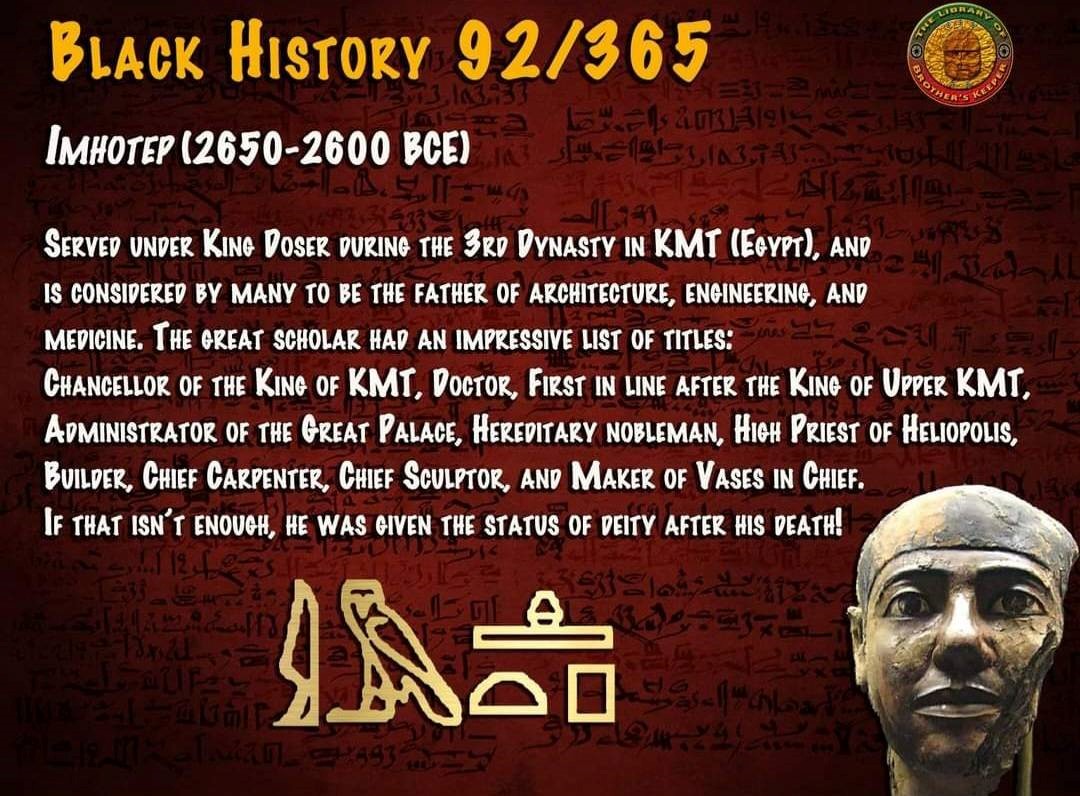 By Neenah Payne
By Neenah Payne
February is “Black History Month”. However, most people don’t realize just how much of Western culture is rooted in Black culture – specifically that of ancient Egypt. So, focusing on ancient Egypt is not a focus just on Black history, but also on European and American history.
The motto on the Egyptian temples was “Know thyself”. Europeans and White Americans cannot know who they are without understanding their profound debt to ancient Egypt. Just as all of mankind came from Africa, the roots of all civilizations are in Africa – as will be shown in upcoming articles. Black history is world history – not just a tiny subset of American history, as is often assumed. So, Black history should be taught all year – not just for one month.
We are told that the Greek Hippocrates (450-380 BC) was the “Father of Western Medicine”. However, Hippocrates studied in ancient Egypt where the legendary polymath Imhotep (2667-2600 BC) was the real father of medicine. See Imhotep: The Real Father of Medicine is African.
Imhotep also launched an architectural revolution with his creation of the first Step Pyramid which is the oldest of the Seven Wonders of the Ancient World. It was the first pyramid and the first structure of cut stone. Imhotep was the first to use columns to support a building which Greeks and Romans later copied. Imhotep is also considered the first astronomer and created the world’s first calendar! It was divided into 12 months consisting of 30 days. Imhotep’s name means “he who comes in peace” and he was called “The Prince of Peace” and the “Son of God” in Europe. He is considered the world’s first polymath (genius) in recorded history. Imhotep was so great he was deified in his lifetime as the son of Ptah, the god of architects. In 525 BC, Imhotep was elevated to the status of a god!
Imhotep, Father of Medicine
Depictions of Imhotep like the one in the video below make him look more European than African. That’s part of the pervasive Stolen Legacy. See Stolen Legacy: The Egyptian Origins of Western Philosophy by George G. M. James.
Have you ever wondered how the medical profession came to be? or in fact who started the profession at all? Well, take a seat and prepare to be amazed because today’s episode is about Egyptian genius Imhotep the Father of modern Medicine. Imhotep, was born sometime around 2667 BCE in Egypt. A commoner by birth but genius by nature Imhotep is what is known as a “polymath” and during his lifetime, mastered the Arts of Astronomy, Architecture, Poetry, Mathematics and medicine. For anyone wondering what a polymath is listen to the end of the episode for a really great explanation.
The First Step Pyramid
Imhotep: The World’s First Multi-Genius 7/17/22
The video above says that Imhotep was the most influential person in world history! Pharaoh Djoser, the first ruler of the 3rd dynasty was struggling with a drought. Famine crippled the country. The king asked Imhotep to help and he saved the country. Imhotep was appointed chief architect, the second most important position after pharaoh. All buildings were made of sunbaked bricks, wood, or stone. Imhotep had a new idea – to construct building from cut limestone, a more robust material which allowed the building to remain for 5,000 years. That’s how he constructed Egypt’s first pyramid – Djoser’s Step Pyramid which allowed structures to rise higher and last longer than ever before. It was an architectural revolution which provided the basis for all future pyramids.
Although Imhotep was not the first to build with stone, a building of the size of the Step Pyramid made entirely out of stone had never before been constructed.
Imhotep established an organization for builders which laid the foundation for Freemasonry.
It was a true revolution in the history of the world. It was the largest building of its time and the world’s first monumental structure. Imhotep was the most powerful influencer of his time – an architect, scribe, High Priest of the Sun God Ra, inventor, engineer, physician, astronomer, writer, and healer. His influence was so great that he would be worshipped not just by Africans, but by foreign nations such as the Greeks and Romans for the next thousand years. He was deified by the New Kingdom. He was known as the son of Ptah, Egypt’s God of Craftsmen and Architects.
The Roman Christians referred to Imhotep as a healer, a “Prince of Peace”. The Romans and Greeks worshipped Imhotep as the “God of Medicine” 2,000 years before the birth of Hippocrates. The Edwin Smith Papyrus from 1600 BC us an ancient Egyptian medical text showed that the dissection of the human body was done systematically in ancient times using tools ancient surgery tools. The Egyptians had elevated the healing arts far beyond any other country.
Astonishing progress had been made in both diagnosis and therapeutics. Egypt’s medical schools which were well-known throughout the world with its specialist physicians being summoned to attend royal and other dignitaries in distant lands. Being educated by Africans was a passport for success as a physician. Imhotep is believed to have authored the earliest medical text ever discovered referred to as the Edwin Smith Papyrus, the first comprehensive trauma treatise in the history of medicine.
The First Pyramid Builder Imhotep explains that it contains 48 medical case histories presented in a clear, rational, and scientific manner that is remarkably advanced for the time.
Imhotep is also considered to be the first astronomer in history and is credited with creating the world’s first calendar that is divided into 12 equal months each consisting of 30 days. He advocated a positive attitude and his best-known proverb is “Eat, Drink, and Be Merry, For Tomorrow We Shall Die”.
Not only is the ESP the source of numerous anatomical and functional concepts of the nervous system, it is the basis for the development of modern objective clinical thinking, establishing the foundations of modern medicine more than a thousand years before Hippocrates. The volume features an impressive array of medical material that reveals the precise conditions described by the ancient physician and explores the Egyptian contribution to modern diagnostics, clinical practice, and methodology.
The approach to treatment of trauma in ancient Egypt was very much in keeping with modern concepts of medical-surgical care. Homer said, “In Egypt, the men are more skilled in medicine than any other human being”.
Imhotep the African: Architect of the Cosmos
Amazon Description
An Exploration of Imhotep—Architect of the Step Pyramid at Saqqara, High Priest of Ra, and Royal Astronomer—as Well as His Influence as the True Father of African Civilization.
In this groundbreaking book, Egyptologist Robert Bauval and astrophysicist Thomas Brophy uncover the mystery of Imhotep, an ancient Egyptian superstar, pharaonic Da Vinci, Michelangelo, Galileo, and Newton all rolled into one. Based on their research at the Step Pyramid Complex at Saqqara, Bauval and Brophy delve into observational astronomy to “decode” the alignments and other design features of the Step Pyramid Complex, to uncover the true origins and genius of Imhotep.
Like a whodunit detective story, they follow the clues that take them on an exhilarating magical mystery tour starting at Saqqara, leading them to temples in Upper Egypt and to the stones of Nabta Playa and the black African stargazers who placed them there.
Imhotep the African describes how Imhotep was the ancient link to the birth of modern civilization, restoring him to his proper place at the center of the birthing of Egyptian, and world, civilization.
Editorial Review
“Imhotep the African is an archaeological l detective story. Bauval and Brophy make the case that the legendary Egyptian physician, architect, and astronomer Imhotep was not only an historical figure but that he was black. This remarkable book challenges many assumptions about life along the Nile, revealing a worldview and technology that was more sophisticated than anything previously imagined.” —Stanley Krippner, PhD, co-author of Personal Mythology ― Reviews
“Bauval and Brophy have once again brought their keen intellectual and scientific skills to bear by examining an aspect of ancient history that contemporary Egyptologists have been either too afraid or too unwilling to investigate. Imhotep the African is the perfect sequel to Black Genesis, for it presents incontrovertible truths that will either be accepted on their merits or ignored for fear of exposing a house of lies built upon foundations of historical falsehoods.
It is evident to many of their colleagues that Robert Bauval and Thomas Brophy are the dynamic duo of independent Egyptologists. They are to be commended for their scholarship and their dogged determination to present an honest assessment of historical events–even if it flies in the face of conventional dogma.” — Anthony T. Browder, author and independent Egyptologist ― Reviews
Imhotep: The Life and Legacy of the High Priest Who Designed Ancient Egypt’s First Major Pyramid
Amazon Description
Africa may have given rise to the first human beings, and Egypt probably gave rise to the first great civilizations, which continue to fascinate modern societies across the globe nearly 5,000 years later. From the Library and Lighthouse of Alexandria to the Great Pyramid at Giza, the ancient Egyptians produced several wonders of the world, revolutionized architecture and construction, created some of the world’s first systems of mathematics and medicine, and established language and art that spread across the known world. With world-famous leaders like King Tut and Cleopatra, it’s no wonder that today’s world has so many Egyptologists.
Perhaps the most intriguing aspect of ancient Egyptian civilization was its inception from the ground up, as the ancient Egyptians had no prior civilization which they could use as a template. In fact, ancient Egypt itself became a template for the civilizations that followed. The Greeks and the Romans were so impressed with Egyptian culture that they often attributed many attributes of their own culture‒usually erroneously‒to the Egyptians. With that said, some minor elements of ancient Egyptian culture were, indeed, passed on to later civilizations. Egyptian statuary appears to have had an initial influence on the Greek version, and the ancient Egyptian language continued long after the pharaonic period in the form of the Coptic language.
The pyramids of Egypt are such recognizable symbols of antiquity that for millennia, people have made assumptions about what they are and why they exist, without full consideration of the various meanings these ancient symbolic structures have had over the centuries. Generations have viewed them as symbols of a lost past, which in turn is often portrayed as a world full of romance and mystery. This verbal meaning has become associated with the structures through the tourism industry, where intrigue obviously boosts ticket sales. In fact, the Egyptian pyramids are so old that they were also drawing tourists even in ancient times. In antiquity, the Great Pyramid of Giza was listed as one of Seven Ancient Wonders of the World, and it is the only one still surviving today.
The…ancient Imhotep was a talented architect and builder who succeeded in creating something that had never been seen before. In fact, Imhotep is considered by many to be the world’s first true scientist, or at least the first scientist known by name. Although the historical references to Imhotep are disparate, fleeting, and dispersed over a time span of nearly 3,000 years, he is without doubt one of the most influential people in early Egyptian and ancient history in general.
Few ancient Egyptians who were not kings are known today, and almost none have been so revered or worshiped long after their deaths as Imhotep was. Later writers, Egyptian and Greek, stated that he was an accomplished physician, magician (the two often went together in ancient Egypt), and astrologer. He was described as a man who knew just about every aspect of nature and science, and he wrote extensively on several different subjects. Imhotep’s fame grew so much during his life that he became even more important long after he died, to the extent that he was eventually worshiped as a god.
THE ANCIENT RENAISSANCE MAN IMHOTEP SET THE EGYPTIAN PRECEDENT FOR ANTINOUS TO BECOME A GOD
Vizier under King Zoser
The office of the vizier in politics was literally described as “supervisor of everything in this entire land.” Only the best educated citizen could handle the range of duties of this position that worked closely with the Pharaoh. As vizier, Imhotep was chief advisor to Zoser in both religious and practical matters, and he controlled the departments of the Judiciary (court system), Treasury, War, Agriculture, and the General Executive.
Architect of the famous pyramid at Sakkara
The Step Pyramid at Sakkara is the only of Imhotep’s achievements that can still be seen and appreciated today. Its reputation is largely based on Imhotep’s accomplishments as the pyramid’s inventor and builder. This pyramid for King Djoser, also called “Netjerikhet” (Incarnation of the Gods), was the first structure ever built of cut stone, and is by far the oldest of the Seven Wonders of the World, the seven structures of the ancient world that were astonishing accomplishments for their time.
It took twenty years to complete—not very long, given the newness of the idea and the state of structural science in the Bronze Age (between 3000 B.C.E. and 1100 C. E.), the period of development where metals, particularly bronze, were used for the first time. The total height of the pyramid and base is just under two hundred feet, unimaginably large for a single structure before Imhotep’s design….The complex consisted of many other buildings, as well as ornamental posts some thirty-seven feet high. The protection of the king and his burial gifts—about 36,000 vessels of alabaster, dolomite, aragonite, and other precious materials—was the other primary function of the burial site.
The entire complex was enclosed within a stone wall about thirty-five feet high. Imhotep added several false entrances to throw off possible tomb raiders. As a final measure, the king’s treasure was lowered through vertical shafts around the tomb into a long corridor one hundred feet below ground. The digging of just this corridor without machines of any kind is an amazing accomplishment by modern standards. When Antinous and Hadrian visited Egypt in the year 130 AD, they stood atop the plateau at Sakkara and marveled at the achievements of Imhotep.
Physician-magician, God of medicine
As a god of medicine, Imhotep was beloved as a curer of everyday problems who could “provide remedies for all diseases,” and “give sons to the childless.” Members of the cult of Imhotep in the Twenty-sixth and Twenty-seventh Dynasties (between 525 B.C.E. and 550 C. E.) would pay tribute to the God at his temple just outside Memphis. The temple also contained halls devoted to the teaching of medical methods, and to the preservation of the materia medica, which details the entirety of Egyptian medical knowledge which may actually have originated with Imhotep.
Imhotep’s name was often grouped with such powerful deities as Thoth, God of Wisdom, Isis, the wonder-worker, and Ptah, a healer and the ancient God of Memphis. Although royal individuals were deified by the Egyptians, Imhotep is unique as the first non-royal man to be known by his own name as a god inferior in power only to Re (chief Sun-God). With that precedence in mind, the Egyptians had no objections to accepting Antinous as a God.
Imhotep was also a member of the great triad of Memphis, with Ptah, Imhotep’s father among the gods, and Sekhmet, a goddess associated with childbirth.
Ancient Egypt in America Today
Imhotep authored an encyclopedic text used by Egyptian architects for thousands of years. He established an organization for builders that laid the foundation for Freemasonry.
15 of the 45 US presidents from George Washington through Ford were Masons – dressing up in an ancient Egyptian-like apron and following Egyptian rites. See Masonic Symbols From Ancient Egypt’s Mystery System and The Role Of Freemasonry In The American Revolution.
The Pyramid Apron of The Pharaohs and the Masonic Tomb of Seti I
On my recent visit to the British Museum, one granite statue that really caught my attention was this one of Thutmose III of the 18th dynasty. He is wearing the iconic triangular apron that instantly reminded me of the pyramids. It also reminded me of the black and gold statues of Tutankhamen…. In fact you can find a number of depictions of Egyptian royalty wearing what I’m calling the pyramid apron and it seems to go all the way back to the Old Kingdom.
US Founding Fathers Knew Ancient Egypt Was Black
The US Founding Fathers worshiped ancient Egypt. That’s why the Washington Monument in the nation’s capital honoring the first president looks like an Egyptian obelisk. That’s why our currency has a pyramid with the Eye of Horus! America is living in ancient Egypt now with eyes wide shut.
Washington Post: THE BLACK ROOTS OF EGYPT’S GLORY 10/11/87
The Washington Post article and the video below talk about Count Constantine de Volney of France, friend of Benjamin Franklin, who wrote Ruins of Empires. Volney explained that the ancient Egyptians were Black. Since Thomas Jefferson translated Volney’s work, he and the other US Founding Fathers knew ancient Egypt was Black – even as they enslaved Africans and Black Americans. And emulated ancient Egypt.
Since Jefferson translated must of The Ruins of Empires by de Volney into English, he and the other US Founding Fathers knew ancient Egypt was Black even as they enslaved Africans and Black Americans! They were enslaving people they worshipped and whose civilization they copied! They enslaved their masters!
The Kemetic Roots of West Afrika 6/5/22
For More Information
Oscar Is Based on Egyptian God Ptah
Why The West Must Understand Africa Now
Why Do Popes Worship The Black Madonna?
Cheikh Anta Diop Proved Ancient Egyptians Were Black
How Queen Elizabeth’s Jubilee Is Connected To Ancient Egypt
Africa Is MUCH Larger Than You May Realize: Why That Matters
Become a Patron!
Or support us at SubscribeStar
Donate cryptocurrency HERE
Subscribe to Activist Post for truth, peace, and freedom news. Follow us on SoMee, Telegram, HIVE, Minds, MeWe, Twitter – X, Gab, and What Really Happened.
Provide, Protect and Profit from what’s coming! Get a free issue of Counter Markets today.

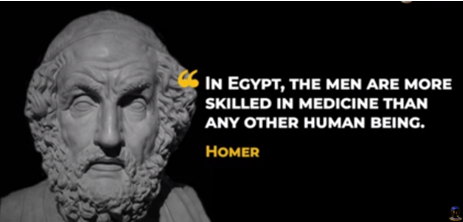


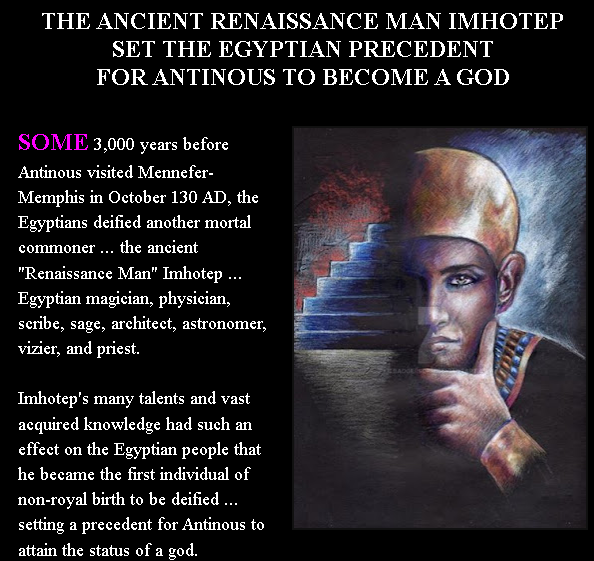
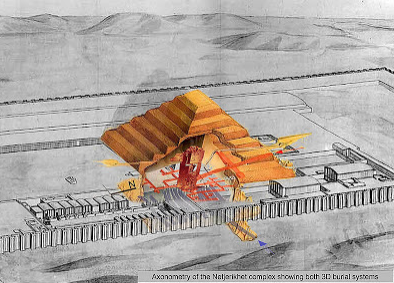
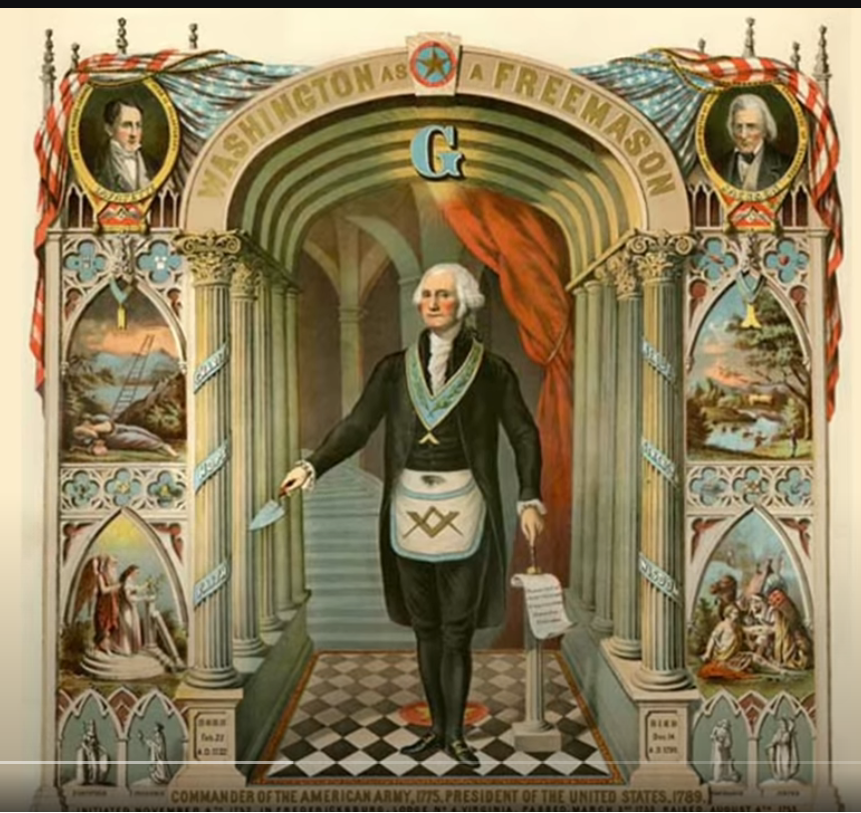


Be the first to comment on "Imhotep: Father of Western Medicine/Freemasonry"